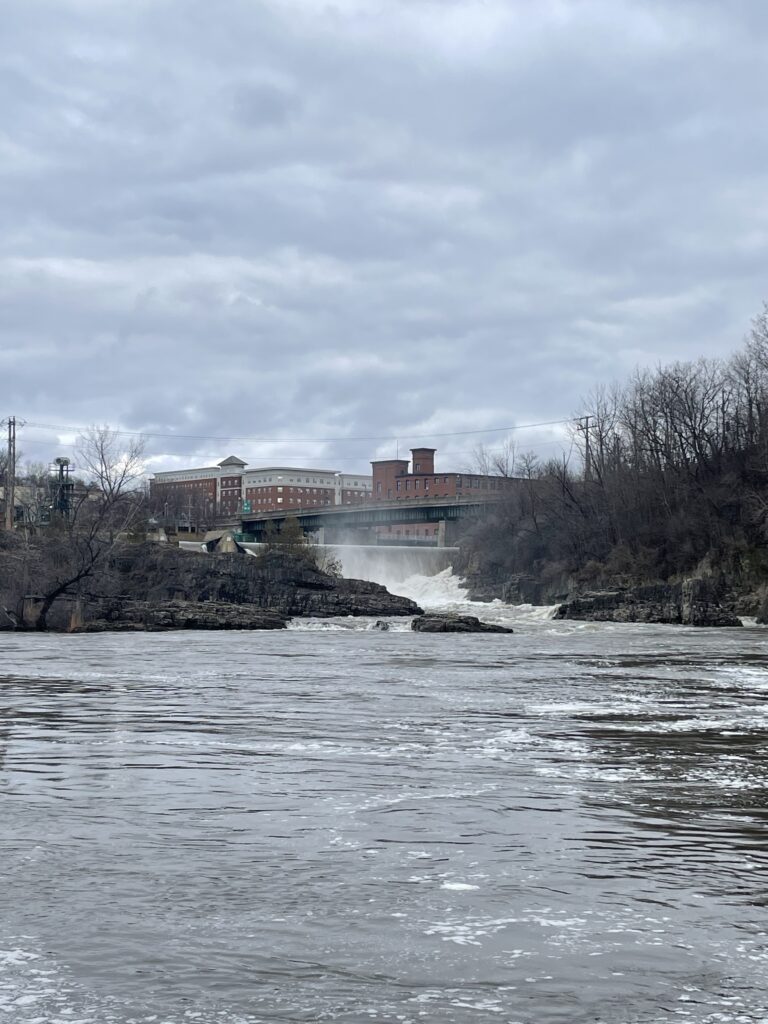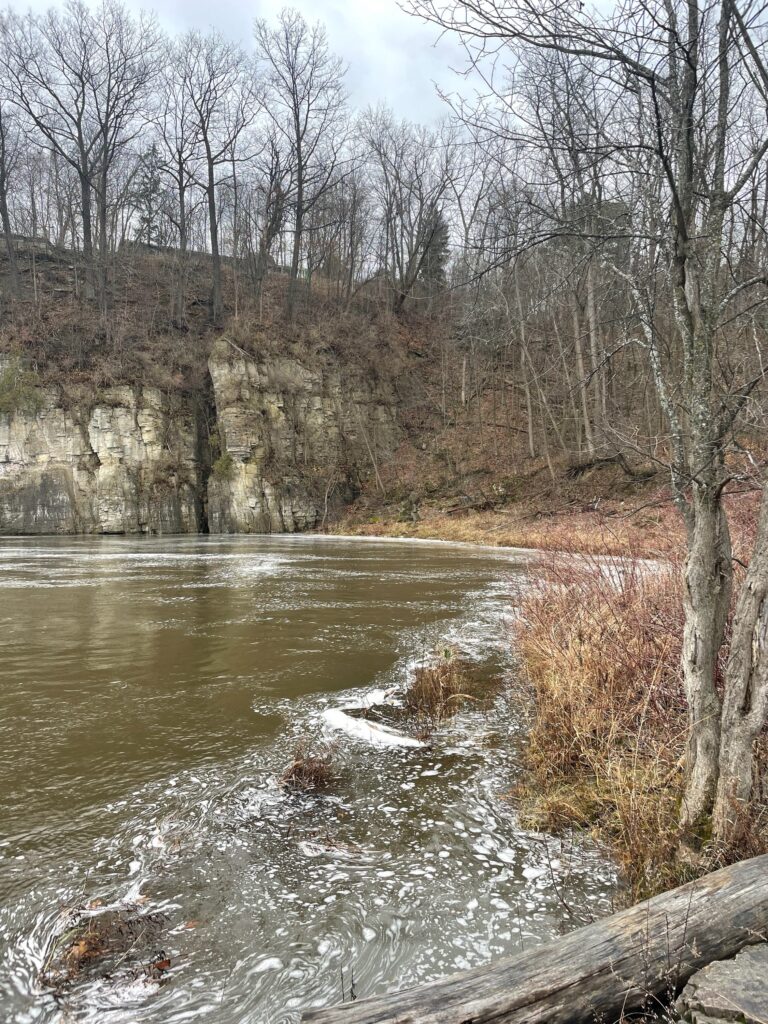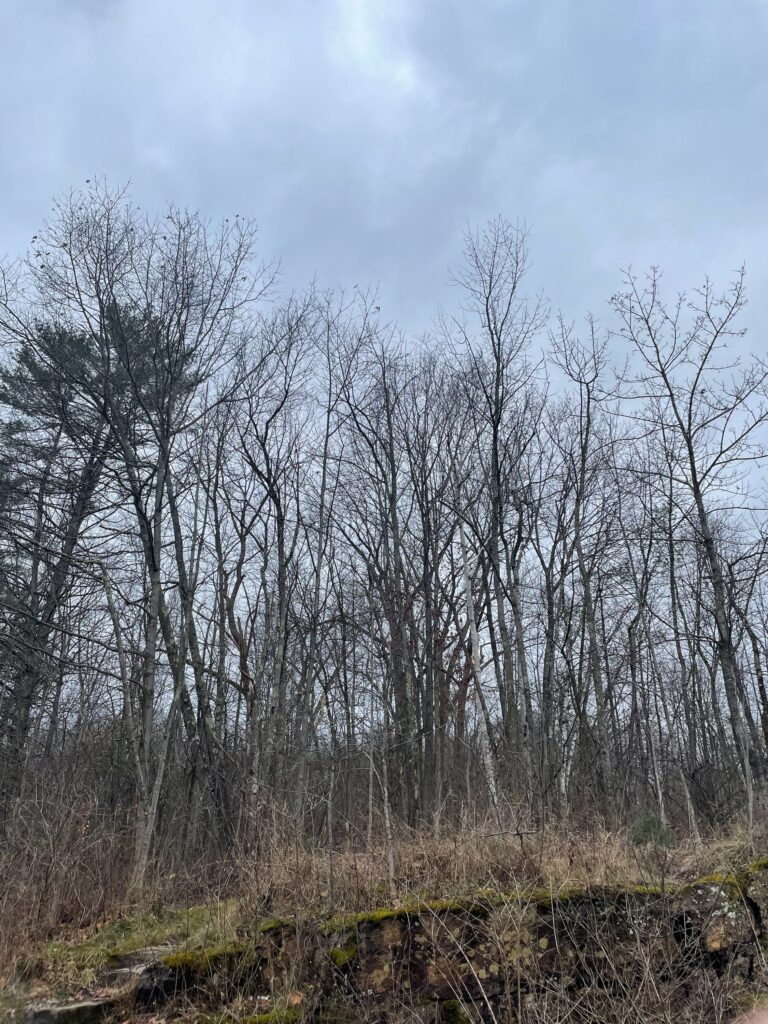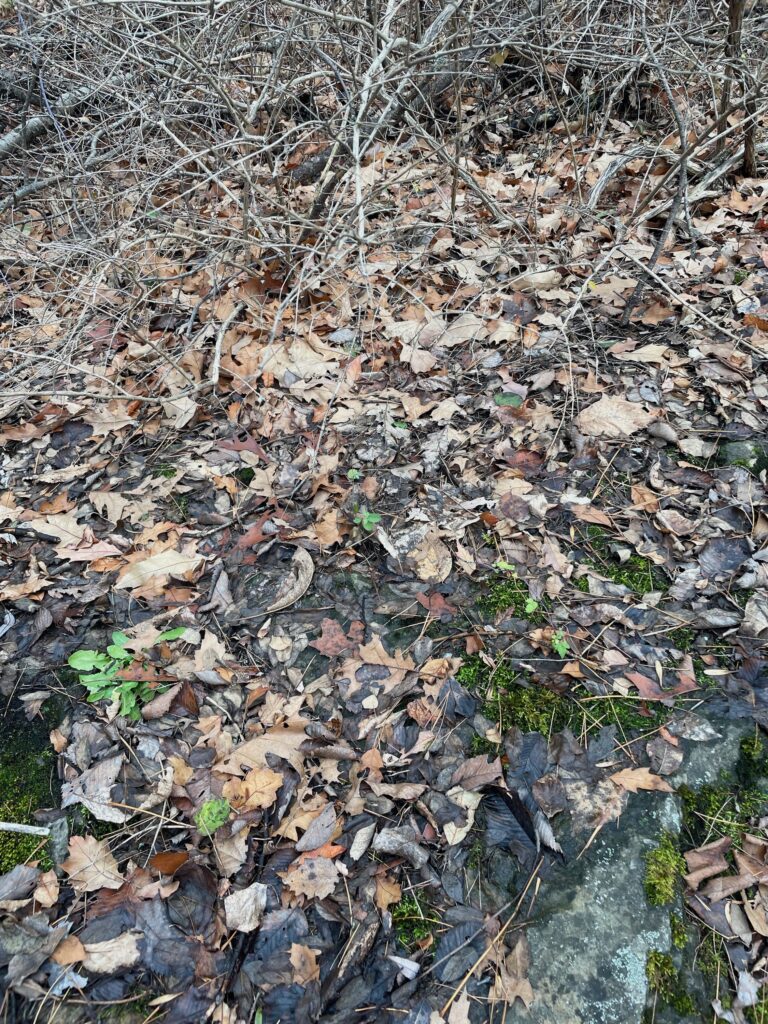As I approached my site today I could hear an ambient rumbling. I thought that I was hearing noises from the road or the nearby airport, but as I got closer to the river I could tell I was wrong. The river was rushing and the dam upriver of my site had water cascading loudly onto the rocks below. Looking around at the landscape the major jump in water level from the last time I visited was very evident. The beach area where I’d seen goose tracks was submerged as well as a stretch of the waterside that was covered in wildflowers earlier in fall. I wonder if this flooding happens annually around this time of year or if this amount of water is unusual. This water that is causing flooding is a product of the warmer temperatures and the rain that we’ve experienced over the lsat few days. Meltwater coming down from the mountains is joining the rainfall to create a compound effect that raises the water level. The frozen ground in the headwaters of the Winooski also contributes to the excess of water. When rain falls onto frozen ground the soil cant absorb or use that water. instead, this rain flows off of the surface and picks up sediment that will eventually flow into rivers and streams. Warm temperatures, frozen ground and high rainfall all work together to form–what I imagine to be– ‘goldilocks’ conditions for high water flow and rising river levels. Every year there is usually a period around January that we call the “January Thaw”, a time when the ground starts to un-freeze and the snow pack recedes a little bit. If the conditions during that “thaw” are similar to the conditions that I experienced today, then I would imagine that the river would also raise at that time of year.


At this time of year almost all of the trees have lost their leaves. I looked around my site to try and see if I could find a beech tree that was still clinging onto its leaves, but to my surprise, the only tree that still had some ‘stragglers’ was a young red maple on the hillside. I was surprised by this because typically maple trees shed all of their leaves before winter. These leaves were dead of course, it was just odd that they were still clinging to the branches of this particular tree, especially when all of the surrounding trees were completely bare. Since the vast majority of the trees already lost their leaves the leaf litter was quite dense. However, unlike how in the fall the leaves were crunchy and light, the leaves at this time of year were much more damp and layered. I would imagine that cold damp leaves such as the ones that I found would be good conditions to spend the winter in for the wood frogs we learned about. Signs of decomposition were pretty noticeable but I wasn’t able to find the decomposers responsible for it.



I wasn’t able to find many signs of wildlife. I was pretty bummed that I couldn’t find any winter nests or signs of feeding but as I left my site I saw a mouse scurry across the trail. This mouse is probably trying to prepare for winter as they are still active in this month and have to prepare for the long months to come. Mice burrow into the snow to bear their young but still have to stay active collecting food and avoiding predators throughout winter. Maybe if I go back during the colder months of January or February I will be able to find a maze of tunnels under the snow, home to the mouse that I saw earlier today. One thing that concerned me today was the amount of noise pollution at my site. F-35’s were leaving the Burlington airport as well as a bunch of passenger airliners. I could see them rise above the tree-line and disappear into the clouds as I observed my site, the sound traveled quickly and at times I had to cover my ears because it was so excessive. Even when planes aren’t as frequent there is still noise from the nearby roads and towns that sandwich either side of the river. I wonder how all of this noise pollution effects communication between birds and what other implications such high levels of disturbance have for natural areas.
This semester I have really enjoyed my visits to my Phenology site for a couple reasons. Visiting a natural place so involved in an urban landscape is something new to me. Seeing how humans interacted with the land and observing the phenological changes that occur in such a space was super cool. I also really enjoyed being able to use my knowledge and senses to break down a landscape into different pieces and processes through observation and investigation. Overall the experience of being involved with the landscape and recording my interactions with it was super valuable and is something I want to continue to do.